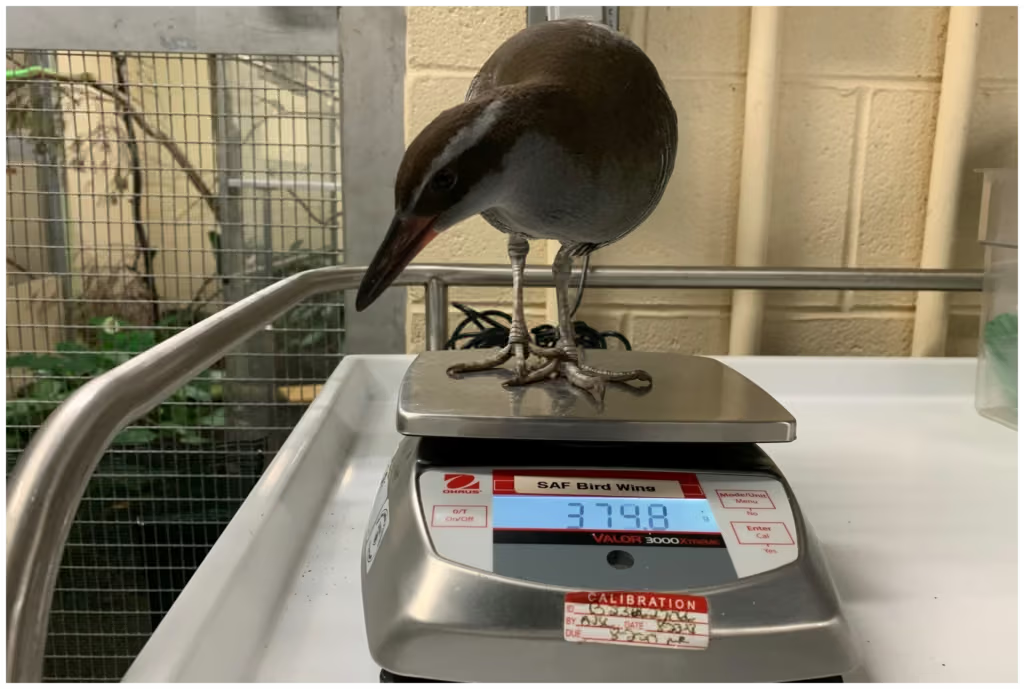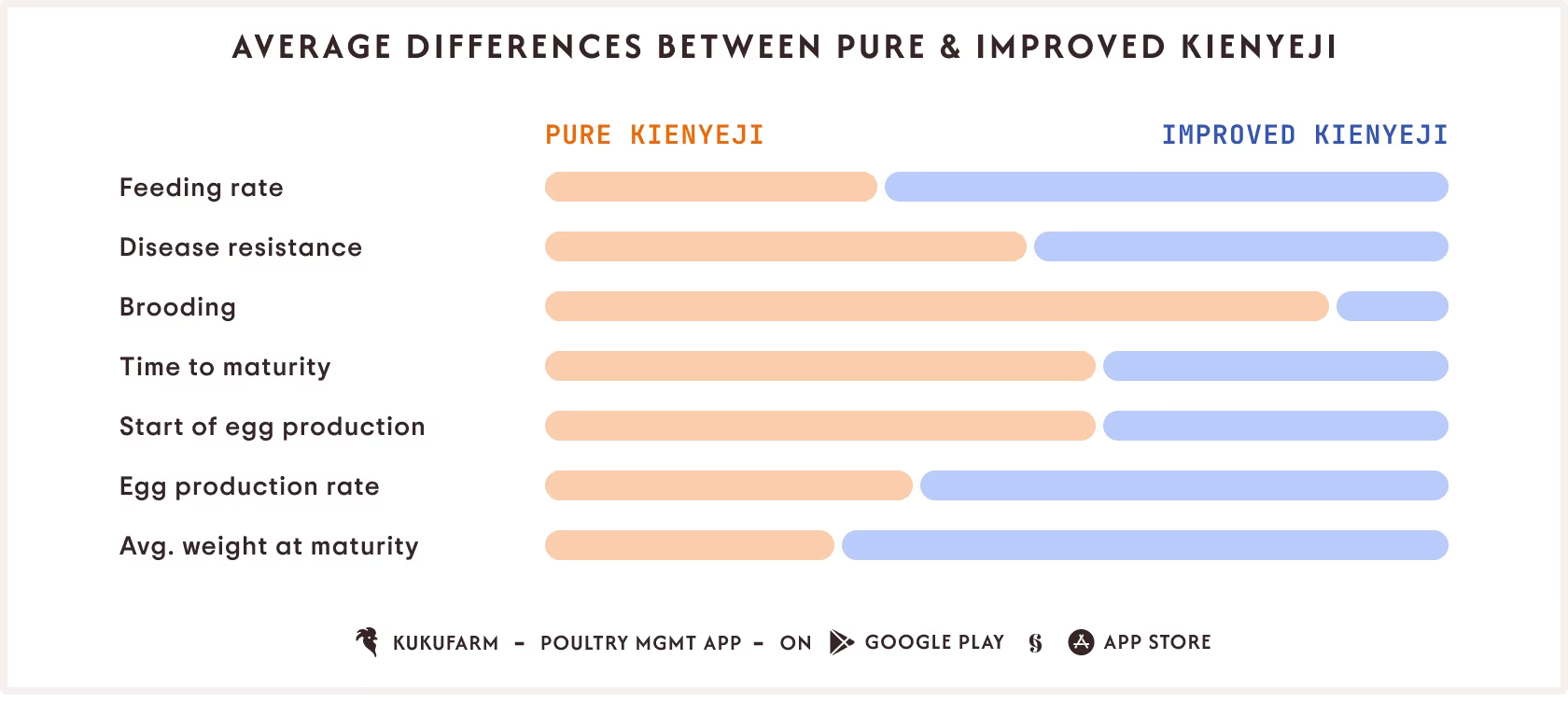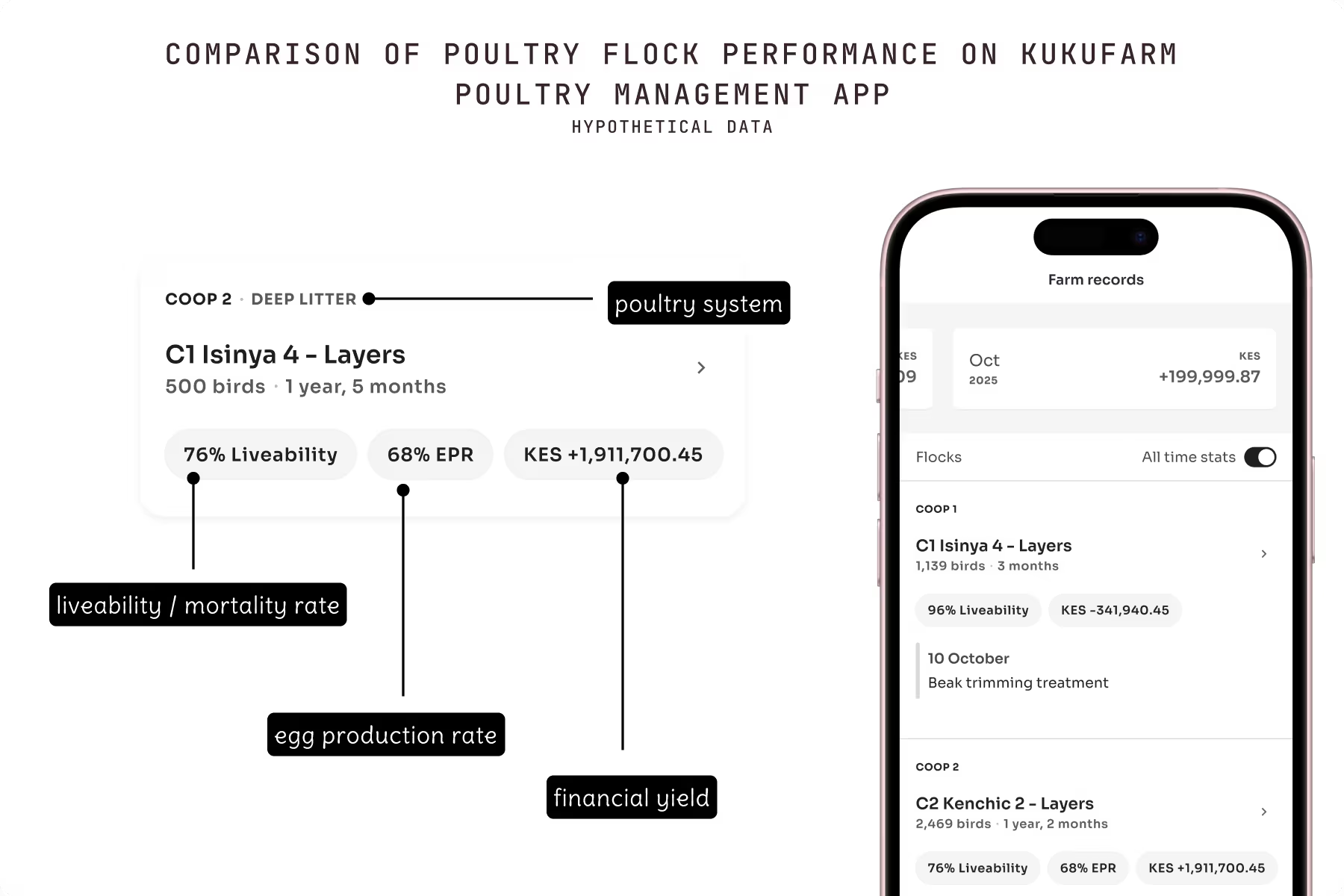As a poultry farmer it is essential to track poultry flock performance to determine how to maximise flock yield. Firstly, this requires keeping poultry flock records over time in order to understand said flock performance.
Secondly, after understanding flock performance, you can compare performances across flocks and therefore make data informed farming decisions to increase the yields and returns of your poultry business.

Kukufarm is a leading poultry management app that supports you in managing your poultry farm and tracking flock performances over time. Moreover, Kukufarm’s poultry dashboard now automatically compares flock performances across coops.
You can get Kukufarm app from PlayStore and AppStore.
What is poultry flock performance
Poultry flock performance is the measure of flock’s aspects that contribute to its success in a poultry farming business. Needless to say, the following factors can be tracked over time to measure the performance of a poultry flock:
- Liveability rate
- Egg production rate
- Financial performance
- Feed conversion ratio

A flock with a high liveability rate, high egg production rate, high financial yield and a low feed conversion ratio has a high yielding, and vice versa.
Why compare poultry flock performance
There are a number of reasons you may want to compare poultry flock performance. Firstly to identify a poultry breed with
- Low mortality rate / high liveability rate
- High egg production rate
- Low feeding costs / feed conversion ratio
Secondly, you as a poultry farmer may want to compare different poultry system to identify which one is most productive or most suited for your farm.

Thirdly, as far as we are concerned, the jury is still out on what the most productive poultry system is. Although aviary systems have lower egg productivity than cage systems, we have not found studies that have compared all intensive poultry systems. Nonetheless, you as a farmer don’t have to wait for others to answer that question. Using Kukufarm, you can already start doing your own research.
Fourthly, comparing poultry flock performance means that you no longer have to rely on hearsay or guesswork when making farming decisions. Inescapably, doing so makes you a smart farmer.

Last not least, we’ve seen lots of claims about the productivity of improved kienyeji breeds. However, we are yet to see actual data backing up those claims. On our part, we have found that kienyeji chicken can have over 50% egg production rate. Poultry farmers would greatly benefit from factual data, not mere hearsay.
How to compare poultry flock performance
One of our objectives when we started building Kukufarm app was to support farmers in practicing data based farming. Therefore, one of the things we wanted to do down the line was to help farmers easily compare poultry flock performances quickly, and therefore be able to make farming decisions based on actual farming data.

To support this, we’ve recently added a dashboard to Kukufarm poultry management app which already supports simple and effortless comparisons of flock performances. In the current iteration, you can view all-time flock performance stats across different coops including
- Poultry system
- Liveability rate
- Egg production rate
- Financial yield
The advantage for you as a farmer is that you can effortlessly see what poultry system works best for you, if you’ve different systems in use, what breed has the best liveability rate if you have different breeds and so on.
In the future, we envision adding more comparison factors such as weight gain and feed conversion ratio out-of-the-box to support you in making data based farming decisions and smart farming.
Poultry flock performance key takeaways
- Poultry flock performance indicators can include poultry system, liveability rate, egg production rate, etc
- Kukufarm now supports automatic poultry flock performance comparison in its dashboard
- More advanced performance factors include weight gain and feed conversion ratio
- You compare flock performance to determine how to maximise flock yield over time
Also see
